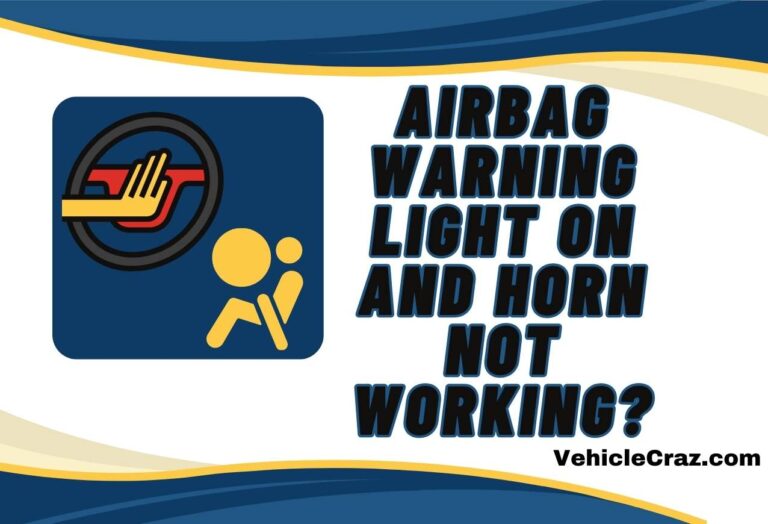How to Test a Car Temperature Gauge? Step-by-Step Guide
The temperature of the vehicle’s engine coolant is an essential factor that tells a lot about your vehicle’s health, and it is shown by the temperature gauge on your dashboard. If you suspect that this vital component malfunctions, it is time to perform a test! But how do you test a car temperature gauge?
We will be explaining the entire procedure of testing a temperature using a multimeter so you will be able to clarify any doubt regarding the condition of your temperature gauge.
How to Test a Car Temperature Gauge?
In order to test a car temperature gauge, you will need to use a multimeter. We’ve been through this process, and we’re here to guide you step-by-step on how to use a multimeter correctly. Let’s make this as easy and safe as possible.
1st Step – Always start by disconnecting the negative battery terminal. Trust us, it’s a simple step but super important to avoid any electrical mishaps.
2nd Step – This little part is usually hiding in your engine block or cylinder head. If you do not have an idea where that is, just grab your car’s manual.
3rd Step – Here’s where a socket wrench or a screwdriver comes in handy. Use them to gently disconnect the sensor. Remember not to harm the component.
4th Step – Grab your multimeter and set it to Ohms mode. Not sure which resistance range to use? Your car’s manual has the answer, so check it.
5th Step – Now, take the multimeter probes and touch one to each terminal of the sensor connector.
6th Step – Here’s the moment of truth. The multimeter will show a resistance value. Check your car’s manual to see if the value falls within the right range. If it’s way off, you might have a faulty sensor on your hands.
7th Step – Want to play detective? Disconnect the sensor, heat it with a hairdryer (yes, a hairdryer), and watch the resistance drop. It’s a cool way to see if the sensor reacts properly to temperature changes.
How Do I Know if My Temperature Gauge is Bad?
If your temperature gauge is going bad, you will notice the following signs.
Unusual Gauge Behavior
Stuck Gauge
If your gauge is acting like it’s glued in one spot – either always showing cold or hot, even when the engine’s temperature clearly should have changed – that’s a sign something’s not right.
Jumpy Needle
Does your temp gauge needle move like it’s dancing? If it’s jumping around or moving in jerky motions, it could mean there’s an electrical issue or the sensor that talks to the gauge is having problems.
Incorrect Readings
Here’s a cool trick – you can use an infrared thermometer to check the engine’s real temperature. If the numbers on your gauge and the thermometer don’t match up, your gauge might be faulty.
Gauge Stays on Cold
When you start your car, the gauge should move from cold to a normal operating range as the engine warms up. But if it stays stubbornly cold, even though you’ve been driving for a while, that’s a hint something might be off.
Gauge Always Shows Hot
If your gauge is constantly in the hot zone, but you don’t notice any signs of the car actually overheating (like steam or an overheated engine smell), then the gauge might be giving you false alarms.
Engine Behavior
Overheating
This one’s serious. If your engine is getting hot but your gauge is chilling in the ‘all is good’ zone, that’s a big red flag. Also, keep an eye out for the “check engine” light.
Sluggish Engine
Ever feel like your car’s just not in the mood to go, especially in traffic or after idling? If your gauge isn’t keeping up with the engine’s actual temperature, it can make your engine feel lazy.
What is the Normal Temperature Gauge Reading for a Car?
According to the car experts, the normal temperature gauge reading for a car lies between 195°F and 220°F (that’s 90°C to 105°C). When your engine is all warmed up, the needle on your temp gauge should ideally be somewhere in the middle.
However, there can be slight changes in the ideal temperature range due to the following influential factors. Let us explain them one by one.
- In general, every car has its own “normal” temperature. This depends a lot on the type of car you have. So, our first tip is to check your car’s owner’s manual. It will tell you the perfect temperature range for your vehicle.
- The temperature outside plays a big role in how hot your engine runs. On a scorching summer day, your engine’s going to run a bit hotter. And on a chilly morning, the gauge might show a cooler reading.
- If you’re driving up a steep hill or towing something heavy, your engine works harder and gets hotter. It’s like when you run fast and feel warmer.
- Even small stuff, like using the air conditioner or heater, can make a tiny difference in what your gauge reads.


I’m Alex, a seasoned mechanical teacher with over 20 years of hands-on experience in Australia. My passion for all things automotive has driven me to establish this blog, aiming to share my wealth of knowledge and expertise with fellow enthusiasts, DIYers, and anyone keen on understanding the mechanics behind the machines we rely on daily.







